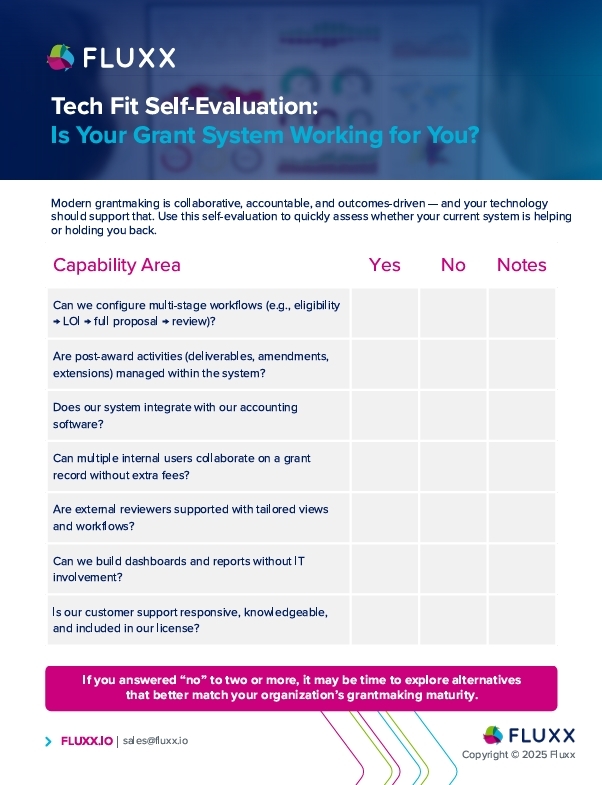When "Submit" is All You Get: Unveiling the Tech Shortfalls in Your Grantmaking Process
Subscribe
Be the first to know about new Fluxx grants management resources, blog articles and podcasts.
Subscribe


Let's be real, grantmaking today is not a straightforward "submit-and-done" activity. Today's environment is collaborative, compliance-oriented, and outcomes-based. If your grant system is doing nothing more than gathering up applications, perhaps it is time to wonder: is your technology working for you or against you?
Too often, organizations discover that, after putting a system in place, it wasn’t designed to facilitate the entire grantmaking cycle. They're mending holes in their workflows with emails, spreadsheets, and manual processes outside their system just to get the job done.
Red Flags: Where "Submit" Marks the Beginning of the End
You may identify some of these:
- Reporting is manual or lagging - generating bottlenecks in crucial cycles.
- Internal collaboration occurs outside the system (hi, email threads).
- Disbursements as well as payments are recorded separately in financial platforms.
- Deliverables, milestones, and amendments for grantees are addressed offline.
- Your technical staff is repeatedly requested to band-aid solutions.
If this feels familiar, you're not to blame. Most systems were designed for intake, not for impact.
The True Cost of Simplicity
An "easy to use" system isn’t always the value it appears to be because of system limitations and hidden fees to unlock needed functionality. A few typical flags to be aware of:
- Advanced functionality locked behind higher levels: User roles, conditional logic, or file upload types only available at costly enterprise subscription levels.
- Limited user base: Cross-team collaboration is decided by budget, not need.
- Support as a value add: Systems that are easy to use, but not to update drive consultant and advanced service costs up (i.e. cheap user licenses but costly support)
- Manual integrations with financial tools: If you're manually inputting data into accounting systems, you're wasting time and incurring risk.
One public agency recently reported that they had to manually track upwards of 800 active grants spread over 12 different programs - because their software couldn’t accommodate financial tracking. That is not efficiency. That is burnout.
What Grant Management Software Should Do
Grantmaking software must be more than a submission engine. It must:
- Fully integrate natively with financial systems such as QuickBooks, Intacct, or NetSuite
- Supporting intricate workflows: Multi-step reviews, compliance checkpoints, and conditional steps
- Handle the entire lifecycle such as post-award milestones, reports, payments, and extensions
- Empower grantees through collaborative portals for drafts, revisions, and communication.
- Consolidate your data in order for you to track impact, compliance, and performance among programs
At Fluxx, we've collaborated with hundreds of funders who initially believed that their "simple system" was adequate - but realized otherwise after witnessing what was achievable.
Want to see how your current system measures up?
We created a quick Tech Fit Self-Evaluation checklist to help foundations identify whether their current grant management software supports the full lifecycle, or holds them back.

